QuestionQUESTION: i had bought this turtle from china myself and then i came back to my home in dubai, united arab emirates where the weather is very hot (30C-45+ C) but i have bought a tank with dimensions l=80cm, b=40cm, height=31cm its almost 7-8 months i have had it but its only grown to 7 cm in length. pls advice. i also want to send you some photos of my tank but i dont have a particular address of yours. it would be really helpful if ou could give me a mailing address do that i can send the photos.
thanks
awaiting your reply.
ANSWER: You can post your photos to photobucket.com or a similar web based photo server and then advise me of it's link by asking another question later.
I will have to see several pictures of this turtle to determine the species in order to provide care information. Generally, a typical tank setup in not suitable for a turtle or tortoise unless the tank is very very large. Even baby turtles need plenty of space for exercise, thermoregulation, and mental stimulation.
You will have to ask the question again and include the relevant information. I cannot advise anything in regards to this turtle without details. I don't know if you use UVB lighting, or even what diet you are using, so I cannot advise.
http://www.anapside.org/mainchelonians.html
---------- FOLLOW-UP ----------
QUESTION: i have posted the photos on photobucket.com ().i would like to know weather the tank and its features are sufficient for the turtles. the RES is 4 inches in size and i also have a reeves turtle also about 1.8 inches in length. i feed them TROPICAL brand dried shrimps and also NUTRAFIN gammarus pellets. i feed them thrice in the day (morning, afternoon and evening. the Res at times brings in front its front limbs and vibrates in the reeves faces. i am curious of such kind of behavior. i feed them separately in a plastic container. and the Res does'nt bask if kept in the tank but when i keep it in a other container which is inclined slightly so that i can give it both a dry and wet place (AL=80 cm W=5 inches, H=5 inches) in which i have also kept a inverted plastic box for the turtles to hide and sleep inside it does easily and also feel more comfortable but in the tank the only problem is it doesn't bask but the reeves does.(http://s208.photobucket.com/albums/bb62/girish_105/) this is the link for the photos.
AnswerBoth turtles appear to be male. The Reeves turtle is semi aquatic and often likes to hide in tall grasses, etc. It will need more dry area than provided in the tank currently setup. Young Reeves may spend a lot of time in the water, but they also require some area of soil and reptile safe wood bark to burrow in, especially as they grow.
The coral you have provided in the tank may pose an abrasion hazard to the skin and shell, possibly causing a wound and chance for infection, and I probably would not use it. I use smooth river stones instead for such setups.
Pellets and dried shrimp is ok only as a supplement or treat, not as a staple part of the diet. These turtles should also be offered fresh foods such as earthworms, snails, feeder fish, crickets, lean boiled chicken, anacharis plant, duck weed, sea weed, greens, and other fresh veggies.
Once a day feeding is plenty for a juvenile. An adult turtle can be fed every 2 days. Overfeeding, rather than underfeeding, a reptile is usually the mistake people make. Reptiles have lower metabolism and convert much more intake into biomass than mammals do, thus, they require less than most start out feeding to their turtles. If you feed a small amount everyday that is fine, but it should be moderated, and I would recommend alternating food items during the week to maintain a balance and interest by the turtles in new things.
The RES getting in front of the Reeves and brushing it's limbs, is a typical mating behavior. The pictures are not the clearest, but the Reeves does also look like a male to me, and perhaps the RES does not realize this yet.
I am not sure of the dimensions of your aquarium tank, but for both these turtles, the tank size needs to be 30-40 gallons for now. The Reeves will not get much bigger, but the Slider will. Check my rescue website under "turtles" at: http://freewebs.com/wichitafallsreptilerescue to see how big an adult RES can get. This is typical size after a few years. When it gets that big, it will need considerably more space, as in 100 gallons or more, or an outdoor enclosure.
If the pictures I see of the turtle on top of the coral rock are of the RES, then it appears to be of sufficient size for now.
The RES may be stressed and not yet comfortable with it's surroundings. RES will live mostly in the water, but it will need dry basking area to dry off and bask. The coral rocks stacked atop each other looks a little difficult for the turtle to climb and does not provide quite enough flat basking space. I normally advise a slope of pebbles be arranged for the turtles, which makes a beach of sorts. Other rocks or logs in the water is fine as well. Water depth should be at least equal to two shell widths. Water temp should also be in the mid 70s.
Based on your pictures, another reason the RES may be more willing to bask in the plastic bin, is that it is near the window and provides more light. Even if the UVB levels are good with your lamp setup in the tank, if the light intensity and UVA levels are not proper, the turtle may not be stimulated to bask, or even know that there is a basking source present. It is the bright light which stimulates them to bask. You may need a spot/flood basking lamp of more wattage than what you are using, and if need be, you may have to elevate it higher above the tank to maintain proper temperatures.
Other than these few things, it appears that you have made a good effort to acquire the proper equipment. The purchase of UVB lighting, filtration, and tank heaters is very good. Just ensure that you use caution if the tank heaters are made with glass, as they may break easily, especially if the heater element is exposed out of the water.
http://www.tortoise.org/archives/reeves.html
http://www.chelydra.org/reeves.html
http://www.asianturtle.org/htm/species_Chinemys_reevesii.html

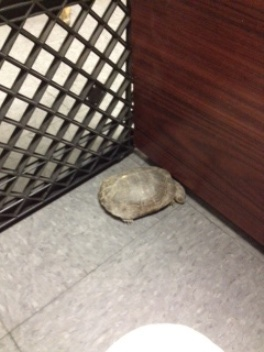 turtle id
Question
turtle id
hello, i would like to know w
turtle id
Question
turtle id
hello, i would like to know w
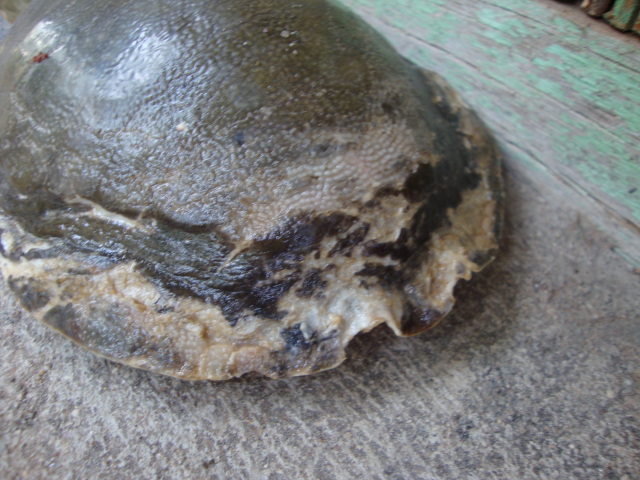 about the health of my tortoise
Question
tortoise shell
hi iam sasikiran.actualy
about the health of my tortoise
Question
tortoise shell
hi iam sasikiran.actualy
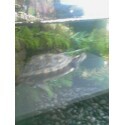 Golden spots on shell
QuestionQUESTION: I have 2 red ear sliders & 2 painted
Golden spots on shell
QuestionQUESTION: I have 2 red ear sliders & 2 painted
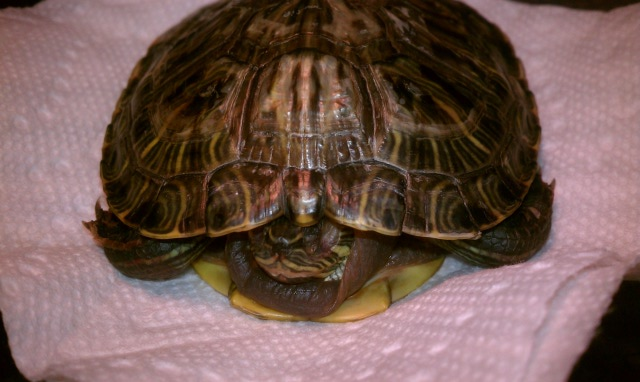 RES turtle being treated for Septicemia
QuestionQUESTION: Hello,
I have a RES turtle being tre
RES turtle being treated for Septicemia
QuestionQUESTION: Hello,
I have a RES turtle being tre
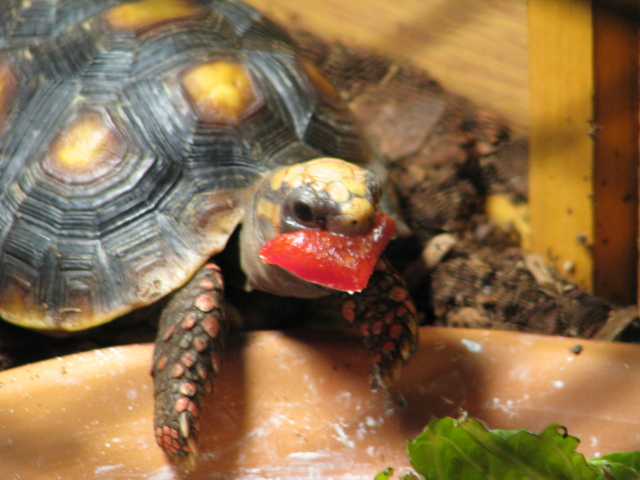 CONSTIPATION
QuestionQUESTION: HI. I HAVE A 6 MONTH OLD RED FOOT TOR
CONSTIPATION
QuestionQUESTION: HI. I HAVE A 6 MONTH OLD RED FOOT TOR